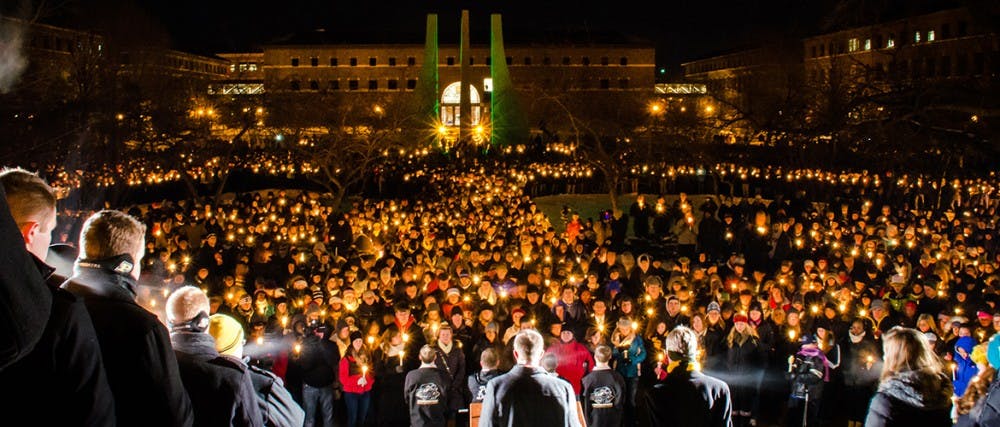In January 2014 there were 11 school shootings:
Jan, 9: A 17-year-old high school student was shot and wounded outside Liberty Technology Magnet School in Jackson, Tenn.
Jan. 13: A 14-year-old freshman was shot twice after a basketball game at Hillhouse High School in New Haven, Conn.
Jan 14: A 12-year-old student opened fire on two students in the gym of a Roswell, N.M. Middle School.
Jan. 17: A 17-year-old student injured two students at a Philadelphia charter school.
jan. 17: A student was shot near Albany High School in Georgia.
jan. 20: A Widener University student was shot on campus while sitting in his car in Chester, Pa.
Jan. 21: A Purdue University student was shot and killed in the university’s engineering building.
Jan. 24: A South Carolina State University student was shot and killed.
Jan. 28: A 17-year-old Honolulu, Hawaii student was shot in the wrist after allegedly attacking a school police officer with a knife.
Source: yahoo.news.com
• Professional calls conception that campus crime is rising “hype.”
• Nine schools experienced shootings in the first month of 2014.
• School attacks account for .8 percent of multi-victim violent crimes.
In the wake of the death of one student at Purdue University Jan. 21, there were more incidents of violence on campus: one death at South Carolina State, a student non-fatally shot at Widener University in Philadelphia and a false alarm at the University of Oklahoma.
The hashtag #PurdueShooting accompanied cries to end gun violence on school campuses, but one researcher argues that school shootings are not on the rise.
Clinical psychologist and professor of education at University of Virginia Dewey Cornell, who has conducted extensive research on school violence, said claims that school shootings are on the rise are just “hype.”
“I would be very reluctant to say that school shootings or any kind of shootings are on the rise based on a few months or a tally of a few dozen cases,” Cornell said. “I have heard these sorts of claims for years and they are almost always based on random variations and selective reporting.”
There are 31,000 deaths and 78,000 nonfatal wounds from firearms every year in the US, according to The Center for Disease Control reports. That amounts to about 300 shootings every day, making the number of school shootings each year a very small fraction in comparison.
A recent but unpublished study Cornell worked on used data from the FBI National Incident-Based Reporting System and found that 47 percent of multiple casualty homicides occur in residences, compared to the 0.8 percent in all school settings combined.
“The massive media attention to shootings on college campuses has created the misperception that these kinds of events are prevalent and that colleges are dangerous places,” he said.
Cornell said the best way to prevent these types of incidents is through threat assessment teams that combine available resources into a team where students who may need help are discussed and then reached out to for aid.
Ball State’s threat assessment team is called Critical Incident Response Team.
Associate vice president for student affairs Thomas Gibson, chairman of CIRT. said Ball State’s response team combines law enforcement, Counseling Center, residence life and others to preemptively stop possible concerns.
“We want to give the students the help they may need as early as possible,” Gibson said. “We want to make sure we mitigate any potential harm that takes place on campus either to themselves or others.”
They meet once a week to discuss student cases, usually brought to their attention by residence life professionals and faculty.
Gibson said he thinks CIRT is helpful but can only do so much to prevent shooting incidents like the one at Purdue.
“I think groups like this are interventions that are moving in the right direction but I can’t say that the establishment of these types of groups will prevent incidents like Purdue’s taking place,” he said. “I know that having these types of groups definitely helps to address concerns before they become dangerous situations.”
Carrie Cadwell, clinical psychologist and Indiana Psychology Association’s education campaign coordinator, said there is a growing concern with anger in the youth population.
“You initially think it’s not going to happen in your backyard. But the Purdue incident shows these things can become a bit unpredictable; you don’t know when [it will be] your neighborhood or your school or your town,” she said.
She disagreed that media coverage exacerbates the problem and said that imitation crimes and apathy are more serious concerns.
“One incident leads to another incident,” Cadwell said. “When we are increasingly inundated by these experiences, we run risk of being desensitized. We can hear about shooting in Indiana one day, Oklahoma, California and it’s news that day and then it’s not news anymore. I worry more about desensitization.”
Cadwell said our country is in the “beginning stages” of taking school shootings and violence seriously.
“We’re starting to say something has to be done,” she said. “I don’t know if we are at the place where enough is being done, but we are at the forefront. Every community has to take a hold of [this issue]. Federal support, state level support but every community has to look honestly and closely at this area. I don’t think we are there yet.”





